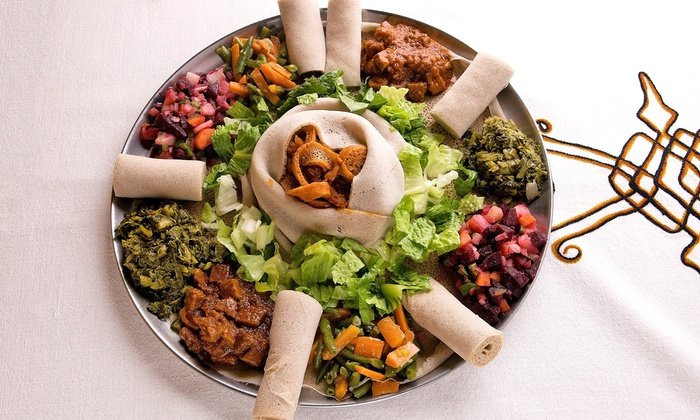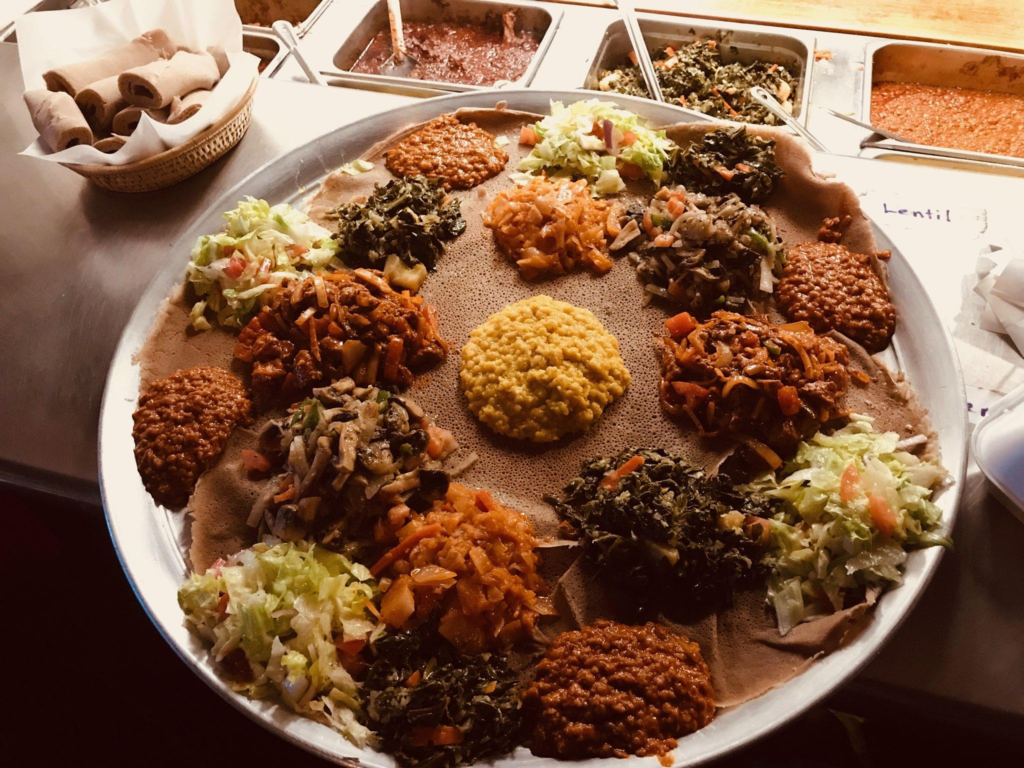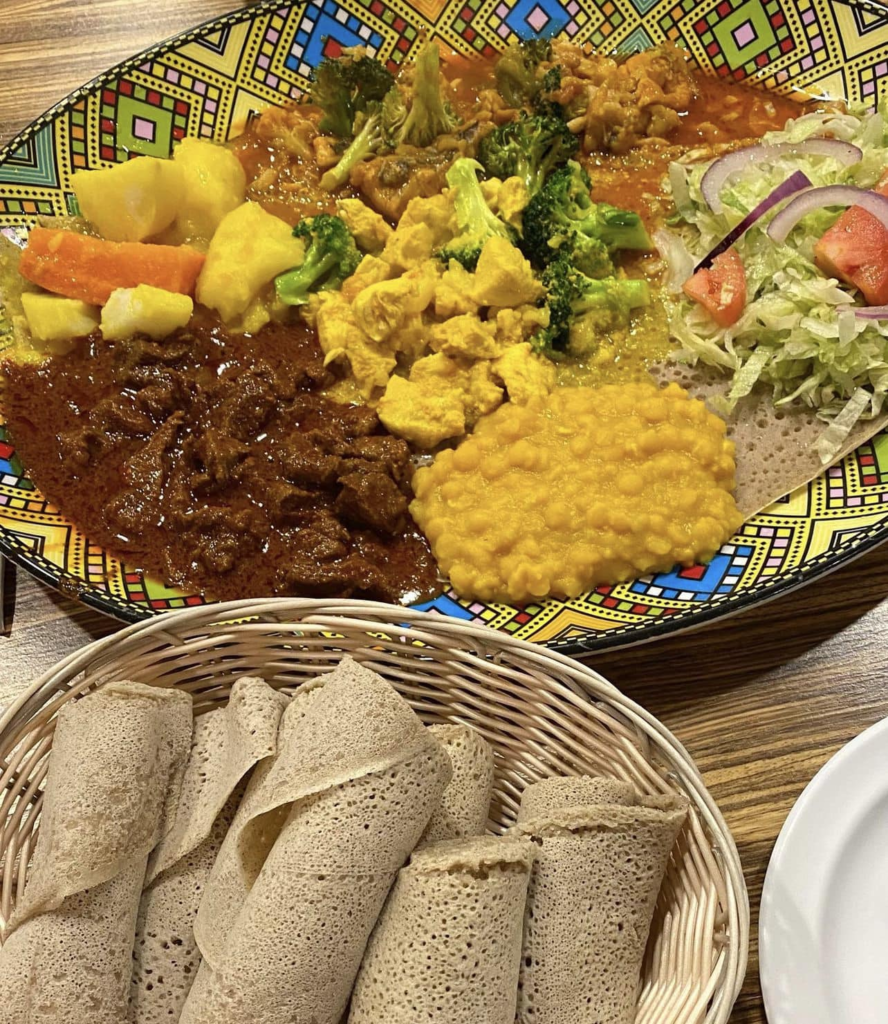
Introduction to Sheba Cuisine
Ethiopian food is a vibrant tapestry of flavors, colors, and traditions that beckons to those eager for an adventure on their plates. If you’ve ever been curious about the rich flavors and cultural significance of this unique cuisine, then you’re in for a treat. Sheba Cuisine stands as a testament to Ethiopia’s culinary heritage, offering dishes that are not just meals but experiences steeped in history and community.
As we embark on this flavorful journey through the heart of Ethiopian cooking, you’ll discover how ingredients come together to create popular dishes that tantalize your taste buds. From the communal aspects of dining to the intricate rituals surrounding coffee ceremonies, every element tells a story. Dive into Sheba Cuisine with us—we promise it will be both enlightening and delicious!
History and Cultural Significance of Ethiopian Food
Ethiopian food is rooted in a rich tapestry of history and tradition. Its origins trace back thousands of years, influenced by various cultures and peoples that have called Ethiopia home.
The cuisine reflects the country’s diverse landscapes and climates. Different regions boast unique dishes, showcasing a variety of ingredients native to those areas. This regional diversity contributes to the vibrant culinary landscape.
Ethiopian food also holds deep cultural significance. It plays an integral role in social gatherings and celebrations, uniting families around shared meals. The communal style of eating fosters connection, emphasizing togetherness over individualism.
Religious practices further shape Ethiopian cuisine. For instance, during fasting periods observed by Ethiopian Orthodox Christians, traditional vegan dishes become staples on tables across the nation.
This culinary heritage not only offers flavorful foods but also tells stories—stories that bind generations through traditions passed down from one family member to another.

Key Ingredients in Ethiopian Cooking
Ethiopian cooking is a vibrant tapestry of flavors crafted from unique ingredients. Central to many dishes is berbere, a spice blend that packs a punch with its mix of chili peppers, garlic, ginger, and various herbs. This fiery seasoning elevates the taste profile of traditional meals.
Teff flour plays a crucial role as well. Made from tiny grains native to Ethiopia, it’s gluten-free and forms the base for injera—an essential component in Ethiopian cuisine.
Legumes like lentils and chickpeas are common too. They provide protein and heartiness to vegetarian dishes such as misir wot (spicy lentil stew).
Fresh vegetables are abundant in Ethiopian kitchens. Ingredients like kale, carrots, and potatoes contribute texture and nutrition while enhancing the colorful presentation typical of Sheba cuisine.
Popular Dishes and Their Preparation
Ethiopian cuisine is a vibrant tapestry of flavors, best showcased in its popular dishes. One must-try item is Doro Wat, a spicy chicken stew simmered with berbere—a blend of spices featuring chili peppers and garlic.
Another favorite is Misir Wat, a lentil dish cooked slowly to develop rich flavors. The secret? A generous amount of onions sautéed until golden brown before adding the lentils and spices.
Don’t forget about Tibs, which consists of sautéed meat—be it beef or lamb—paired with vegetables for texture and taste. Each bite bursts with warmth from the traditionally used spice blends.
Vegetarians will relish Shiro, made from ground chickpeas or peas mixed into a thick sauce. This comforting dish showcases how flavor can be robust without meat.
Each preparation tells a story, reflecting Ethiopia’s culinary heritage while inviting all to partake in communal feasting experiences.

The Role of Injera in Ethiopian Cuisine
Injera is more than just bread; it’s a cornerstone of Ethiopian cuisine. This unique, spongy flatbread is made from teff flour, which contributes to its distinctive flavor and texture.
Traditionally served on large communal platters, injera acts as both a plate and utensil. Diners tear off pieces to scoop up flavorful stews known as wot. This interactive dining experience fosters community and connection.
Its significance extends beyond the meal itself. Injera symbolizes hospitality in Ethiopian culture, showcasing the warmth and generosity of its people.
Rich in nutrients, this gluten-free option complements various dishes while adding a tangy taste due to fermentation during preparation. The versatility of injera makes it an essential part of any traditional gathering or celebration.
Whether enjoyed at home or in restaurants, injera remains integral to experiencing authentic Sheba Cuisine and appreciating Ethiopia’s rich culinary heritage.
Health Benefits of Sheba Cuisine
Sheba Cuisine is not only a celebration of rich flavors but also offers numerous health benefits. The use of fresh vegetables and legumes means that meals are packed with essential nutrients.
Ethiopian food often incorporates spices like turmeric, which is known for its anti-inflammatory properties. These ingredients contribute to overall wellness and can help prevent chronic diseases.
Additionally, traditional dishes are typically low in processed sugars and unhealthy fats, making them heart-friendly choices. The prominence of lentils and chickpeas provides plant-based protein, aiding muscle growth and repair.
Moreover, many Ethiopian meals include healthy fats from sources such as nuts or avocados. This balanced approach promotes better digestion while delivering sustained energy throughout the day.
By enjoying Sheba Cuisine, you engage in a culinary experience that nourishes both body and soul, all while savoring vibrant tastes rooted deeply in Ethiopian culture.

Where to Find Authentic Sheba Cuisine
Finding authentic Sheba Cuisine can be a delightful adventure. Many cities now boast Ethiopian restaurants that proudly serve traditional dishes. These eateries often focus on family recipes passed down through generations, ensuring an experience steeped in culinary heritage.
Look for establishments with vibrant decor and communal dining settings. This ambiance reflects the warmth of Ethiopian culture, inviting you to share meals just as families do back home.
Food markets featuring international fare are another excellent option. Some vendors specialize in flavorful foods from Ethiopia, offering everything from spices to pre-prepared dishes.
Don’t forget about local festivals or cultural events celebrating Ethiopian food and traditions. They provide an opportunity to taste a variety of dishes while immersing yourself in the rich flavors and cultural significance woven throughout the cuisine. Enjoy exploring your options!
How to Experience a Traditional Ethiopian Coffee Ceremony
The Ethiopian coffee ceremony is more than just brewing a cup of coffee; it’s an art form steeped in tradition and community. To partake, gather with friends or family, as this ritual emphasizes connection.
Start by roasting green coffee beans over an open flame. The aroma fills the air, creating anticipation. Once roasted, grind the beans into a fine powder using a mortar and pestle.
Next comes boiling water in a special pot called a jebena. Add the freshly ground coffee to the pot and let it brew while you prepare small cups for serving.
As you pour the rich liquid into each cup, be prepared for multiple rounds—often three—symbolizing respect for your guests. Traditionally served alongside popcorn or other snacks, this experience transcends mere consumption; it’s about sharing stories and forging bonds within Ethiopian culture.
Fusion and Modern Interpretations of Sheba Cuisine
Fusion cuisine has taken Sheba Cuisine to exciting new heights. Chefs around the world are experimenting with traditional Ethiopian flavors, blending them into innovative dishes.
Imagine a spicy berbere-infused taco or an injera wrap filled with fresh sushi ingredients. These modern twists offer a unique dining experience while respecting the essence of Ethiopian food.
Restaurants are also embracing plant-based trends by creating vegan versions of classic meat dishes. Lentils and vegetables take center stage, showcasing the versatility of staple ingredients like chickpeas and teff.
Desserts are not left behind either. Think sweetened doro wat served alongside rich chocolate mousse infused with spices reminiscent of Ethiopia’s culinary heritage.
This fusion movement highlights how adaptable Sheba Cuisine can be while still honoring its roots. The dialogue between tradition and innovation continues to thrive in kitchens worldwide, delighting adventurous palates everywhere.

Conclusion
Sheba Cuisine offers a vibrant journey into the heart of Ethiopian food and culture. With its rich flavors, colorful ingredients, and deep-rooted traditions, this culinary experience is unlike any other. Each dish tells a story of history and community, inviting you to savor the essence of Ethiopian cuisine.
As you explore traditional dishes like Doro Wat or Tibs, you’ll discover not just delicious meals but also an opportunity to connect with Ethiopian heritage. The role of injera as both bread and plate enhances your dining experience while showcasing the importance of communal eating in Ethiopian culture.
Health-conscious eaters will appreciate that Sheba Cuisine emphasizes wholesome ingredients packed with nutrients. Furthermore, experiencing a traditional coffee ceremony reveals yet another layer of Ethiopia’s rich cultural significance—coffee is more than just a beverage; it’s an integral part of social interactions.
For those eager to taste authentic Sheba Cuisine, local restaurants dedicated to preserving these traditions abound. As chefs experiment with fusion dishes today, they breathe new life into age-old recipes while still honoring their roots.
Ethiopian food is not merely about sustenance; it’s about sharing moments around the table that foster connection and understanding among people from diverse backgrounds. Exploring this cuisine opens doors to appreciating Ethiopia’s remarkable cultural tapestry through each flavorful bite.
For more info, check here!
For more such content, keep visiting QAWire


